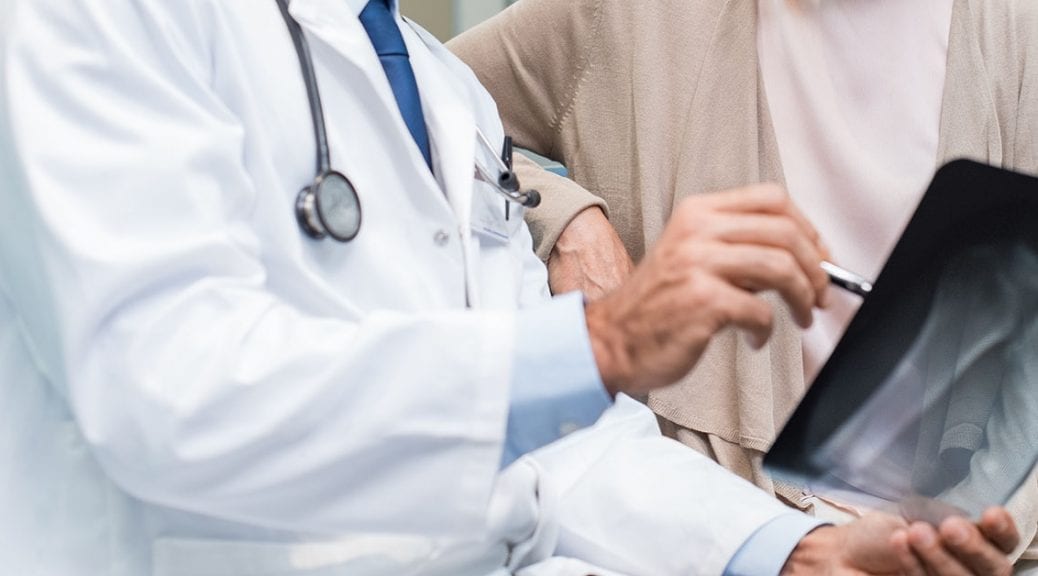According to the National Institutes of Health (NIH), more than 53 million people in the US either already have osteoporosis or at high risk of developing it due to low bone mass. That’s Osteoporosis Awareness & Prevention Month each may is so important. At Paris Orthopedics and Sports Medicine, we are proud to provide care for people suffering from osteoporosis and bone loss at our Bone Health Clinic. A few of the osteoporosis treatments we recommend include the following options:
1. Bisphosphonate Medications
Bisphosphonates are the most common medications used for osteoporosis treatments. Doctors usually recommend them as the first line of treatment, especially in women who are postmenopausal. Common bisphosphonates include:
- Alendronate (Fosamax) – Oral medication taken either daily or weekly
- Ibandronate (Boniva) – Taken as a monthly oral tablet or IV injection that is given four times a year
- Risedronate (Actonel) – Taken as a daily, weekly, or monthly oral tablet
- Zoledronic acid (Reclast) – Available as an IV infusion that’s given every 1-2 years
2. Hormone Therapy Osteoporosis Treatments
Hormone therapy is also called hormone replacement therapy (HRT) and is a common treatment for the symptoms of menopause. It is primarily used to treat hot flashes and night sweats. Estrogen HRT can also be used as an osteoporosis treatment, but it is not the first choice of most physicians due to potential side effects. When HRT is used to treat osteoporosis it may include estrogen on its own or a combination of estrogen and progesterone. These hormonal treatments can come as creams, skin patches, oral tablets, or injections.
3. Hormone-Related Medications
Some medications that are used to treat osteoporosis are not hormone replacement drugs, but they mimic hormones. These drugs include:
- Selective estrogen receptor modulators (SERMs): These drugs recreate the effects of estrogen to preserve bone. These medications are taken daily as an oral medication. Common forms of SERM used to treat osteoporosis are raloxifene and bazedoxifene.
- Calcitonin: Calcitonin is a hormone made by the thyroid gland that regulates the body’s calcium levels. Synthetic forms of calcitonin are used as osteoporosis treatments in people who can’t take bisphosphonates. It can also be used to treat pain in people who have osteoporosis-related spinal compression fractures. Calcitonin can be given as an injection or taken as a nasal spray.
- Parathyroid Hormones (PTHs): Parathyroid hormones are responsible for controlling calcium and phosphate levels in the body. Osteoporosis treatments that use synthetic PTH can help promote bone growth in people with severe symptoms. These drugs tend to be expensive.
4. Antibody Medications
There are two antibody medications used at osteoporosis treatments.
- Denosumab (Prolia): This medication slows the process of bone loss and helps maintain bone density. It is given as an injection every six months.
- Romosozumab (Evenity): This newly approved medication helps increase bone formation. This medication is also given as an injection, but you get two injections once a month for up to a year.
5. Vitamin Supplements
Getting plenty of calcium and vitamin D is an important addition to all osteoporosis treatment. Calcium is the mineral that makes up most of your bones, so consuming it is good for maintaining bone mass and protecting bone health. Vitamin D is important as well because it helps your body absorb the calcium you consume through food and supplements.
The National Institute of Arthritis and Musculoskeletal and Skin Disease’s basic recommendations for calcium intake are as follows:
- Adults 19 – 50 years old: 1,000 mg per day
- Men 51 – 70 years old: 1,000 mg per day
- Women 51 – 70 years old: 1,200 mg per day
- Adults 70 years old and over: 1,000 mg per day.
Consult the entire list for more information on recommendations for young people and women who are pregnant or lactating.
6. Physical Activity
Along with other osteoporosis treatments, exercise is an important part of protecting your bone health.
- Weight-bearing activity (30 minutes daily): These activities can help build and strengthen the bone.
- Walking, dancing, aerobics, using the elliptical machine
- Muscle-strengthening exercise: This type of exercise doesn’t strengthen bones, but it strengthens your muscles to protect bones and prevent falling.
- Weight lifting, weight machines, lifting your own body weight
- Flexibility exercise: Thes exercises improve muscle flexibility, balance, and strength. People with bone loss, especially in the spine, should check with their doctor about safe positions to practice during activities like:
- Yoga, pilates, Tai chi
The team Paris Orthopedics and Sports Medicine are dedicated to helping our patients recover from a wide range of orthopedic conditions and injuries. Our services include general orthopedic medicine, joint replacement, sports injury treatment, and osteoporosis treatments at our bone health clinic. If you’re having trouble with bone loss, call (903) 737-0000 to make an appointment.
*To read our policies regarding COVID-19, please visit the home page of our website for an update.



